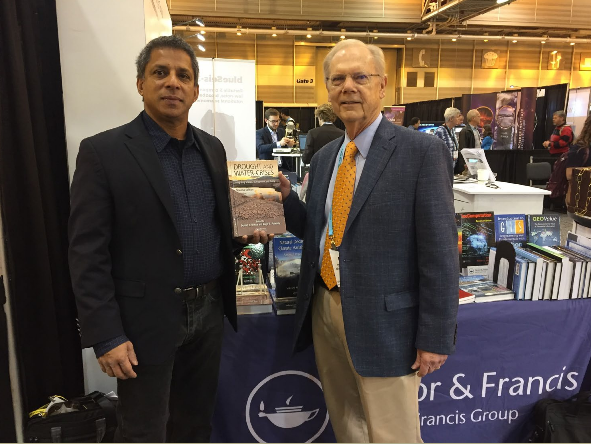
“These 11 Cities May Completely Run Out of Water Sooner Than You Think.” “Buffalo City faces water restrictions; Senekal residents fight over water.” “Global water woes: Australia’s looming water crisis.” “Worsening drought, clean water scarcity affect millions in Indonesia.”
Given the increasing frequency of headlines like those above, someone working globally on drought issues for more than 30 years might be forgiven for becoming either discouraged or militant. A career in drought monitoring and planning, however, has given Don Wilhite, founding director of the National Drought Mitigation Center at the University of Nebraska-Lincoln, a more considered response to the headlines.
“I guess I have learned to be patient while still promoting my vision of preparedness and proactive actions,” the internationally-renowned drought specialist mused. Fortunately the number of climate scientists, managers and policymakers working toward drought risk reduction alongside Wilhite is growing.
It is for that rapidly expanding drought community and others in the wings that Wilhite updated, “Drought and Water Crisis: Integrating Science, Management, and Policy (Second edition),” published recently by CRC press and available for purchase here.
The new book, co-edited by Wilhite and Roger Pulwarty, NOAA senior science advisor for climate research, includes 19 new chapters and significant revisions to others from the 2005 edition. Updated chapters on policy development are complemented by sections showcasing advances in information technology for drought monitoring, warning, decision support and management; and by a section providing case studies giving concrete examples of drought and water management from many political and geographical perspectives. Contributing authors include many of Wilhite’s former colleagues at the drought center within the School of Natural Resources at Nebraska, along with climate and remote sensing technology experts at the school.
According to Mark Svoboda, current NDMC director and a contributing author, the new edition “Drought and Water Crises” has been getting a lot of appreciative notice. “I’ve been at the recent professional meetings and had people comment that they were really happy with the breadth of content.
“The expanded case studies from a variety of scales just weren’t there in the first book because it was an emerging technique,” Svoboda said. “The number of new satellites and the number of new sensors and the amount of people that can get access to the data — and a lot of it is free, which wasn’t the case in the past — is more than ever before.”
Wilhite’s target audience for the first edition of the book was a small group of scientists, managers, academics and practitioners who were actively working in the area of drought
science and management in the early 2000s. Wilhite saw another important audience in those working in United Nations’ agencies, development banks and key government agencies, who could pave the way for changes in drought management given their important role in the international community and the allocation of funds for programs, research and development.
In the decade since the first edition appeared, Wilhite has watched the “drought community” grow substantially. He cites the work of the NDMC as playing a significant role in advancing both the science and management of drought, particularly in shifting the conversation from crisis response to risk reduction. At the same time, worldwide concern about climate change was growing, spurring interest in drought as a natural hazard.
Wilhite hopes the new, expanded edition of “Drought and Water Crises” will provide a way forward for scientists and managers trying to sort through options, whether it be for development of a drought early warning system, or investigating drought triggers or water conservation tools.
“There is an urgent need to change the paradigm for drought management, i.e., moving to an
approach focused on risk reduction,” Wilhite said. He has learned that staying focused and continually pointing to alternative approaches to current practices is an essential component of the increasing willingness of individuals and policymaking bodies to engage in drought planning.
“A state or country might want to change, but unless you provide them with a process to
implement change, they will likely see the process as insurmountable.”
Svoboda agreed. “If people can get great access to a lot of information on drought, they can put it to use. Just like water, access is more than half the battle.”
Suzanne Plass, National Drought Mitigation Center
More details at: https://go.unl.edu/jn8p